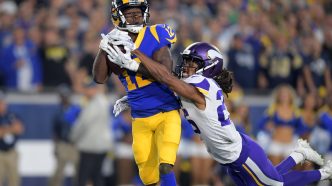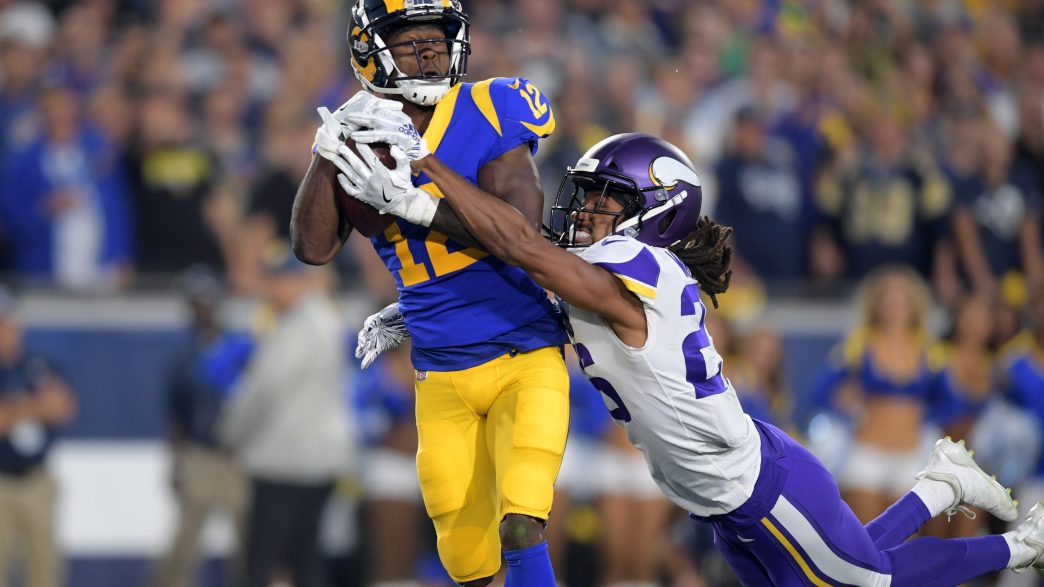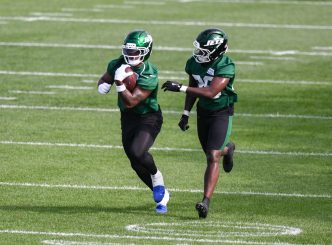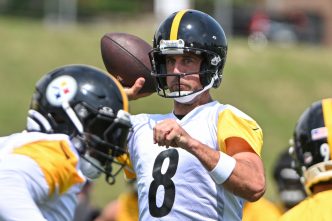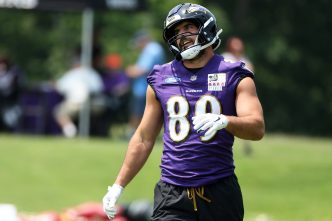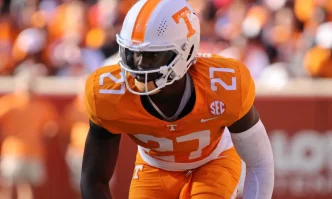In the sprawling drama of the NFL, few plays come with as much surprise and rapid adaptation as the relocation of a playoff game from Los Angeles to Arizona. With the wildfires haunting the Los Angeles area, the league reached a pivotal decision to move the Monday night NFC wild-card game featuring the Los Angeles Rams and the Minnesota Vikings nearly 380 miles east to State Farm Stadium in Glendale, Arizona.
This move wasn’t a spur-of-the-moment call. The intricate logistics were set in motion months prior when all 32 NFL teams submitted detailed schedules of their stadiums’ availability, preparing for unforeseen calamities like inclement weather or facility issues. This foresight meant the league had a contingency blueprint ready to ensure the game would proceed smoothly, even if the venue needed to change.
“We prepare for scenarios like this every year,” explained Brian McCarthy, the NFL’s vice president of communications. The need rarely arises, but when it does, the league is ready to execute seamless transitions that the public might never notice.
In light of the fire crisis, the league had less than five days to shift the grandeur of a Rams home playoff game to Arizona, a logistical puzzle requiring the reassignment of two NFL teams, the wrangling of TV crews, and the transformation of State Farm Stadium into a field fit for playoff glory.
From the outset, the Arizona Cardinals, led by owner Michael Bidwill, stepped up to the plate to aid their NFL brethren, treating this playoff engagement as if it was their own cherished Cardinals battling under those bright lights.
Across the board, every facet of the Cardinals organization played a part. The stadium, which opened its doors in 2006, has seen its share of grand events, from Super Bowls to colossal college showdowns. Unlike those, this event brewed quickly, demanding the rapid recall of the 3,500-strong gameday workforce to their posts, spanning from concession stands to parking lots.
Feeding a hungry crowd was also on the agenda. State Farm Stadium’s usual bustling kitchen was uncharacteristically calm before gearing up to serve an NFL crowd, including 4,500 orders of chicken fingers and 10,000 hot dogs. Working with Craft Culinary Concepts, the stadium ensured their shelves were packed for the challenge.
The field itself, which had recently hosted the Fiesta Bowl and the Cardinals’ last regular-season game, needed its makeover. Days were spent painting the Rams’ symbols onto the turf, including 200 gallons of blue and yellow paint, transforming the setting for Los Angeles to feel right at home. With everyone operating in different time zones, McCarthy wryly noted that merely coordinating clocks added to the excitement of this unique undertaking.
Beyond the field, the Cardinals sent aircraft to transport the Rams’ entourage from Los Angeles to Glendale, with coaches, players, their families, and even a few pets taking the flight. Moreover, while the Rams would bring their own announcer to ring in each play, the Cardinals’ team would manage the stadium visuals, ensuring content was Rams-centric.
Meanwhile, back in Tempe, the Cardinals’ practice facility saw a shift as their lockers were cleared out and prepared for Rams players to gear up and strategize for game day. Each locker, including that of rookie Marvin Harrison Jr., was turned over with the same care and precision given to make sure the Rams felt right at home.
This isn’t the first time the Cardinals have lent a helping hand. Memories of similar assistance during wildfires in San Diego resonate, reminding us of football’s ability to adapt amidst adversity. Former Chargers player David Binn recalled the surreal focus players maintained even with the chaos surrounding them, likening the atmosphere to the unpredictability of a training camp.
Finally, as the Rams prepared to face the Vikings under the Arizona night sky, the NFL’s efforts revealed a theater set with precision and care, proving that even when Mother Nature intervenes, the game, with all its glory and unexpected twists, goes on.

